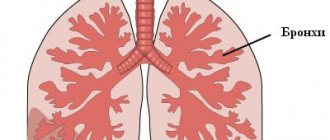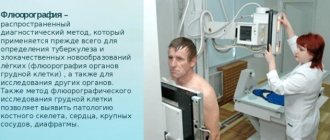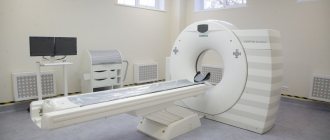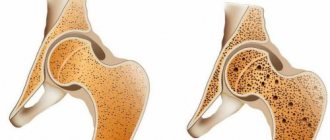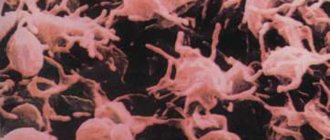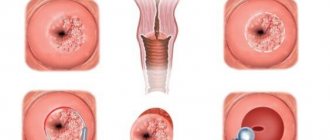The internal organs located in the pelvic area are covered from above by the intestines and omentum. This becomes an obstacle to surgical procedures if a person lies on the operating table in a horizontal position.
Read how and why x-rays are taken of baby teeth
Poor uterine motility also hinders doctors. As a result, a position was found that provided access to the necessary organs - the Trendelenburg position.
When to use
In medicine, the Trendelenburg position is used in the following cases:
1. When blood outflow from the pelvic organs is necessary:
- gynecological operations;
- obstetric pathology;
- uterine bleeding;
- operations on the rectum;
- abdominal surgery;
- some dental procedures;
- endoscopic or x-ray examination of the large intestine;
- X-ray or endoscopic examination of the stomach and esophagus;
- some urological operations.
2. When blood flow to the brain is needed:
- in cases of fainting;
- shocked;
- collapse.
Depending on the type of operation or examination, the position can take a different angle of inclination - from 15° to 45°.
In cosmetology, this position is used in the following cases:
- gynecological cosmetology;
- gender change;
- hymenoplasty;
- liposuction in the abdomen and thighs;
- closure of a defect in the upper palate or cleft lip due to congenital pathology (cleft palate, cleft lip);
- rhinoplasty.

Sometimes, during cosmetic operations in the facial area, a different position is used, which is called “Angitrendelenburg”. In this position, the shoulder girdle is higher than the pelvis, which facilitates the outflow of blood from the upper body and creates good conditions for surgery.
X-ray symptoms of hiatal hernia
X-rays of the stomach and esophagus show hiatal hernia based on the following symptoms:
- displacement of the heart shadow;
- increased airiness under the diaphragm dome;
- decreased transparency of the pulmonary field near the cavity formation;
- rounded clearing with constrictions (due to intestinal folds) on the lateral image;
- when swallowing barium in the patient's Trendelenburg position, the cavity is filled with contrast;
- the shape of the darkening changes with breathing;
- the presence of stomach folds in the area of the esophageal part of the diaphragm.
Indirect signs of a diaphragmatic hernia on an x-ray:
- No gas bubble in the stomach.
- The tortuous course of the esophagus in the supradiaphragmatic part.
- Movement of the stomach into the distal esophagus.
- Rotation of the heart along the longitudinal axis.
- Reduction in the size of the stomach and flattening of its arch.
In conclusion, I would like to note that radiography of the esophagus and stomach can be performed only in the absence of contraindications. Barium sulfate is a water-insoluble substance, so it does not dissolve when it enters the abdominal cavity.

Photo of an X-ray of the stomach: confirmation of a diaphragmatic hernia after contrast
Contraindications to X-ray of the small intestine:
- a through hole in the intestinal wall (perforation);
- purulent inflammation;
- foreign body in the lumen of the organ;
- allergy to barium;
- pregnancy.
An X-ray of the stomach in the Trendelenburg position should be performed not only if a diaphragmatic hernia is suspected. The pose allows you to clearly monitor the state of the gastroesophageal junction. It is used for all types of contrast radiography of the esophagus and stomach.
Advantages and disadvantages
The Trendelenburg position is a body position that improves access to internal organs. It was developed and proposed for use by the gynecologist Trendelenburg, who noted that in the normal position of the body, the omentum and internal organs complicate access to the uterus and ovaries.
And when the body tilts, raising the lower part of the body and lowering the upper, the diaphragm rises up, freeing up space in the abdominal cavity.
Nowadays, special operating tables and chairs have been developed that provide the ability for the patient to tilt on them at different angles, which simplifies the operation and shortens its time. Their mechanism makes it possible to easily transfer a patient from one position to another, even by one specialist, without outside help and without the expenditure of effort and time.
| Pros of the position: | Disadvantages of the position: |
|
|
All effects of the Trendelenburg position are short-lived. They usually go away after the physiological situation is restored, and sometimes it takes some time for the indicators to return to normal. But sometimes this position leads to adverse consequences (cerebral edema, acute cerebrovascular accident, hemorrhage).
The Trendelenburg position is the most optimal option for operations in gynecology. But in people with large body weight, it is practically useless.
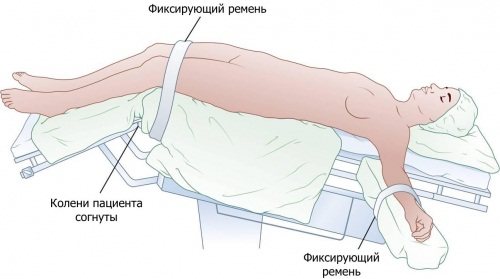
When the body tilts, the diaphragm with internal organs moves to the upper part of the body, freeing up the space in the pelvis necessary for surgery or research. But with obesity, the omentum is too large and, even with a significant tilt, fills the entire abdominal cavity.
Surgeons use it quite often, since with a minimum investment of time, effort and expensive equipment, it is possible to create optimal conditions for the required operation. But, at the same time, in obese patients, the position does not provide the necessary effect or a sharper angle of inclination is necessary to achieve it.
During general anesthesia, the Trendelenburg position prevents aspiration of vomit, but is accompanied by regurgitation of stomach contents into the esophagus.
Anesthesiologists note that the position makes it difficult to intubate the larynx with an endotracheal tube, since in this position it is difficult to examine the epiglottis and glottis and insert the tube directly into the larynx.
Trendelenburg's symptom in traumatology
This is a symptom of decreased strength in the gluteus medius muscle. It originates from the ilium (between the anterior and posterior gluteal lines) and attaches to the lateral surface of the greater trochanter. When a muscle contracts, the areas of its attachment come closer together, therefore, the opposite side of the pelvis rises.
Typically, this muscle contracts when a person stands on one leg: contraction of the gluteus medius muscle on the side that bears the body's weight prevents the pelvis from tilting to the opposite (unsupported) side, thus maintaining its balance. When the gluteus medius muscle is weak, the opposite half of the pelvis tilts, the buttock drops and the free leg lengthens (a positive symptom).
How to demonstrate Trendelenburg's sign?
Stand behind the subject and look at the dimples of Venus (the dimples above the sacroiliac joints). If the subject is standing straight, legs together, and the weight is evenly distributed on both legs, the dimples of Venus should be symmetrical and at the same level (as should the iliac crests and buttocks).
Then ask the person to bend one leg 90° and stand on the other (you need to stand in this position for at least 30 seconds for fatigue to set in). Normally, on the unsupported side, the pelvis and buttocks rise as a result of contraction of the contralateral hip abductor muscles (especially the gluteus medius). Pelvic descent indicates a positive Trendelenburg sign.
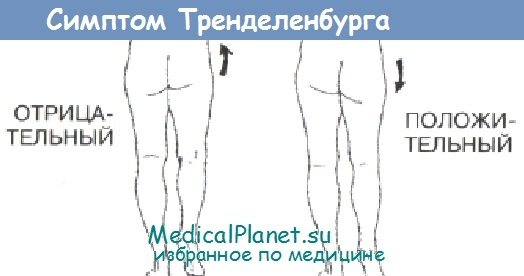
What diseases are characterized by a positive Trendelenburg sign?
In addition to true muscle weakness (due to muscle dystrophy), a positive Trendelenburg sign is detected in congenital hip dislocation, poliomyelitis, damage to the spinal nerve roots (superior gluteal nerve palsy - level L5) or a fracture of the greater trochanter (distal attachment of the gluteus medius muscle).
What is Trendelenburg gait?
This is a characteristic gait that develops with weakness of the gluteal muscles. When stepping from foot to foot, the gluteal muscles cannot hold the pelvis, which sinks on the side without support. As a result, the airborne leg may drop too low and hit the ground; patients are forced to compensate for this in one of two ways:
(1) bend strongly in the direction opposite to the “free” leg, trying to lift the unsupported leg; the gait becomes a “waddle” (so named because it resembles a “duck walk”), characteristic of progressive muscular dystrophy; (2) stepping with the "free" leg very high so that it can touch the ground correctly ("cock gait").
Source
Indications
The following indications exist for placing the patient in the Trendelenburg position:
- surgery on the rectum;
- surgical intervention in gynecology (ovarian cysts);
- ectopic pregnancy;
- urological operations;
- fluoroscopic examination of the esophagus, stomach and duodenum;
- sudden drop in blood pressure;
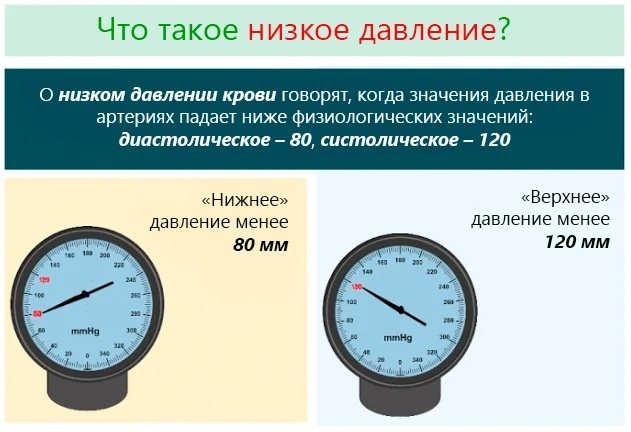
- fainting;
- shock.
Before prescribing a position, the patient must be fully examined so as not to miss any contraindications. The exception is a drop in blood pressure and all types of shock. In this case, the Trendelenburg position is always and immediately necessary.
It is not given only when there is a suspicion of a broken ridge. Therefore, after an accident, injured people simply raise their legs and fix the cervical spine. After giving the patient a position, you can begin to examine him and provide emergency care.
Using the Trendelenburg position clears the upper airway and prevents tongue retraction, which simplifies the process of providing assistance and saves time during the next stages of resuscitation of the patient.
Resuscitators, emergency room doctors and emergency room doctors widely use this position when providing emergency care, since the position of the larynx at this moment prevents the root of the tongue from retracting, which simplifies further work and frees them from wasting time on ensuring patency of the upper respiratory tract.
Obstetricians take advantage of the position during ectopic pregnancy. They note that in the second and third trimester, the duration of a pregnant woman’s stay in this position should be minimal, since the diaphragm is physiologically already high, and the hemodynamic load increases even more, which increases the risk of hemodynamic complications and cerebral edema.
Also, the Trendelenburg position worsens the blood supply to the fetus, which can lead to its hypoxia and, as a result, internal developmental delay syndrome.
Radiologists and doctors of functional diagnostics note the expansion of possibilities with the use of the Trendelenburg position, the possibility of more accurate diagnosis, which leads to the correct diagnosis and successful treatment.
Dentists use the position for better access to the oral cavity. Dental operations are most often performed in the Trendelenburg position, but sometimes tooth extraction, especially wisdom teeth, also occurs in this position. Doctors note greater access to hard-to-reach areas and faster dental procedures.
Safety tests for pediatrics
- When providing emergency care to a child with the “pink” type of hyperthermic syndrome, it is contraindicated
a) warming
b) use of craniocerebral hypothermia
c) applying an ice pack to the area of large vessels
d) rubbing the skin with 40-50% ethyl alcohol solution
- The set of emergency medications for stenosing laryngotracheitis includes:
a) thermopsis tincture
b) tincture of valerian
c) prednisolone, hydrocortisone
d) vikasol
- The main antipyretic drug in pediatric practice, used to combat hyperthermic syndrome
a) analgin
b) paracetamol
c) pipolfen
d) baralgin
- The decisive factor in emergency care for true croup is the introduction
a) antibiotic
b) anti-diphtheria serum according to Bezredko
c) diphtheria vaccine
d) toxoid
- To relieve convulsive syndrome in children, it is used
a) diphenhydramine intramuscularly
b) phenobarbital tablets
c) seduxen tablets
d) seduxen IM or IV
- Anaphylactic shock in children most often occurs after injection
a) penicillin
b) insulin
c) iron supplements
d) vitamin B1
- When providing emergency care to a child with anaphylactic shock, he should be given
a) horizontal position on the side, cover with heating pads
b) semi-sitting position, cover with heating pads
c) position with the head end down, apply an ice pack to the head
d) sitting position, apply an ice pack to your head
- The most effective means for relieving anaphylactic shock in a child
a) adrenaline, prednisolone
b) papaverine, dibazole
c) aminophylline, ephedrine
d) lasix, magnesium sulfate
- When providing emergency care to a child with hyperglycemic (diabetic) coma, use
a) insulin
b) penicillin
c) biseptol
d) furagin
- When providing emergency care to a child with hypoglycemic coma, a solution is used
a) sodium chloride
b) hemodesis
c) novocaine
d) glucose
Contraindications
Contraindications to the use of the position are diseases of the heart, lungs and brain pathology, which are vital organs, therefore, before planning an operation or examination in this position, it is imperative to collect an anamnesis and conduct a general examination of the body.
The main contraindications include the following conditions:
- ascites – accumulation of fluid in the abdominal cavity;
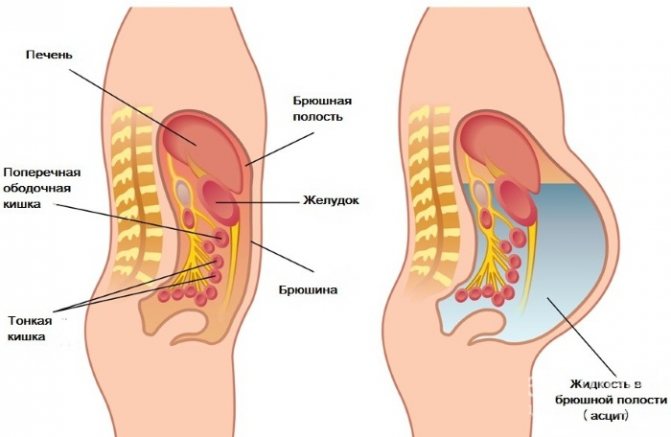
The Trendelenburg position is prohibited for ascites. - the presence of blood in the abdominal cavity, pus;
- advanced age;
- severe sclerosis of cerebral vessels;
- severe heart failure;
- ovarian cysts;
- threat of miscarriage during pregnancy;
- limitation of respiratory function (severe COPD, asthma).
The presence of fluid in the abdominal cavity can lead to the rapid spread of infection throughout the body if it flows into the peritoneal pockets of the spleen or liver. And in the presence of a malignant tumor, metastasis to neighboring organs is possible. Therefore, the Trendelenburg position can only be performed after fluid has been removed from the abdominal cavity.
You should also very carefully prescribe the procedure for diseases of the cardiovascular system, especially with arrhythmias, blockades of various natures, and ventricular extrasystoles. After all, the position helps to increase systole and slow down the pulse, which produces an undesirable effect in case of blockade or arrhythmia.
Lung disease limits the use of the position, so the risks and benefits must be considered before prescribing it. Carry out bronchography and other necessary studies, consider the possibility of taking bronchodilators so as not to provoke an attack of bronchial obstruction or asthma.
Epinephrine
Synthetic adrenaline substitute.
Stimulates alpha and beta adrenergic receptors, increases heart rate. Acts as a vasoconstrictor, increasing blood pressure. Acts as a bronchodilator (expands the lumen of the bronchi during spasms of allergic origin). Reduces renal blood flow, reduces motility and tone of the gastrointestinal tract. Reduces the production of intraocular fluid, thereby reducing intraocular pressure, dilates the pupils (mydriasis). Strengthens the conduction of impulses in the myocardium, reduces the heart's need for oxygen. Reduces the production of histamine, leukotrienes, cytokines, reduces the number of basophils.

Removes potassium from cells, causing hypokalemia. Increases blood sugar levels, leading to hyperglycemia.
Indications for use
Epinephrine is used for anaphylactic, angioedema shock, which was caused by the use of drugs, food, as well as insect bites, reactions to blood transfusions. It is used to relieve attacks of bronchial asthma, COPD, asystole, and chaotic contraction of the ventricles. Effective for arterial hypotension, bleeding from superficial vessels. It is also used for hypoglycemia, during surgical interventions on the eyeball. Indicated for glaucoma.
Route of administration and dose
It is administered intravenously, intramuscularly and subcutaneously, as well as intracavernosally. It has the ability to penetrate the placenta, but does not cross the blood-brain barrier.
For anaphylaxis, epinephrine is administered intravenously at a dosage of 0.1-0.25 mg, diluted in 10 ml of sodium chloride. With this form of administration, the drug acts instantly. If an additional dose of epinephrine is required, the drug is administered by infusion or drip of 0.1 mg. For mild forms of anaphylaxis, the drug is used, diluted with water for injection, intramuscularly or subcutaneously at a dose of 0.3-0.5 mg. Effective in 3-5 minutes.
Adverse reactions
The reaction of the cardiovascular system to epinephrine is manifested by increased heart rate, angina pectoris, arterial hypertension, and irregular heart rhythm. An excited state, hand tremors, headache, bronchospasm, swelling of the mucous membranes, and rash are also observed. Possible nausea and vomiting, increased excretion of potassium in the urine.
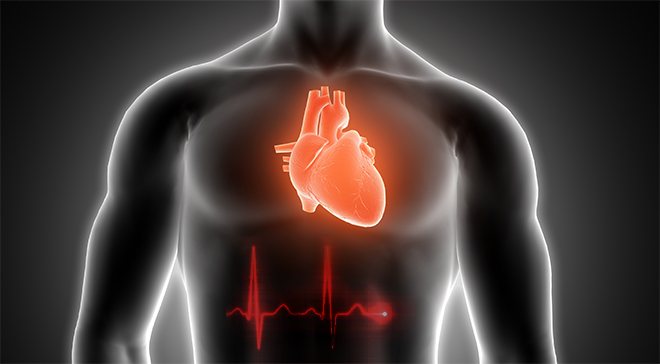
Procedure step by step
The Trendelenburg position is a variant of the body position that provides a good overview during radiography of the abdominal organs or surgical treatment in proctology and gynecology. In all options, preparation for the procedure is similar, but it also has its differences.
When radiography or fluoroscopy of the gastrointestinal tract, the following rules should be followed:
- Avoid taking medications several days before the procedure, excluding medications necessary for daily use for chronic heart disease, lung disease, and diabetes mellitus. You can also leave activated carbon and simethicone preparations, they help cleanse the stomach and intestines of excess gas formation and the accumulation of excess mucus.
- Smoking patients are prohibited from smoking on the day of the examination.

- Before the procedure, all metal jewelry and dentures should be removed.
- The last meal should be 10-12 hours before. before the study and consist of easily digestible foods. The diet should not contain foods that cause gas formation. A small amount of water is allowed on the day of the examination.
- If necessary, a cleansing enema is performed.
The procedure itself includes the following points:
- placing the patient on a special functional table;
- subsequent fixation;
- the shoulders are secured with stops to prevent slipping;
- performing radiography or fluoroscopy of the gastrointestinal tract in a horizontal position;
- changing the position of the body with a raised pelvis (the head end is lowered by 5-15°, the maximum permissible angle of inclination is 45°);
- holding your breath for a few seconds with a snapshot.
If fluoroscopy of the stomach is performed with barium contrast, then barium is injected before the procedure and several pictures are taken in order to maximally record all parts of the gastrointestinal tract necessary for diagnosis.
The position allows for timely diagnosis of diaphragmatic hernia, gastric and duodenal ulcers, as well as polyps and neoplasms of the abdominal organs. If necessary, the procedure can be performed during pregnancy, but only in the 2nd and 3rd trimesters.
After the study, the patient must drink at least 2-3 liters of water per day so that the substance is completely eliminated from the body. Over the course of 3-5 days, depending on the individual characteristics of metabolism, stool disturbances, turning white, and constipation may be observed. After complete removal of barium, stool returns to normal.
For gynecological and urological operations, preparation for surgery is similar. The difference is the peculiarity of fluid intake. In this case, it should be limited as much as possible. Also, operations are performed on a gynecological chair and often in combination with a lithotomy position (with legs down), which helps reduce torsional stress on the lumbar region.
During proctological operations, a cleansing enema is a mandatory item.
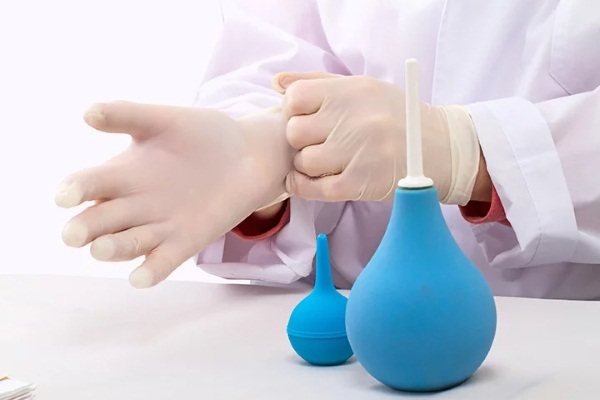
In case of fainting or a sharp drop in blood pressure, when emergency assistance is necessary, laying on the table is omitted in order to save time.
The procedure consists of the following points:
- put the patient on any hard surface;
- place a cushion made of a towel, clothing or other available items under the cervical spine;
- raise your legs at an angle of 35-45°;
- check airway patency, heartbeat and pulsation in the carotid artery;
- measure blood pressure levels;
- swipe cotton wool soaked in ammonia in front of the nasal passages;
- start emergency care.
The Trendelenburg position is the first thing to do in case of fainting, because this position will provide physiological compensation for the body, a rush of blood to the brain and a gradual independent recovery from fainting.
If the cause is a drop in blood pressure, then the position contributes to its increase. Securing a position does not require much effort, so anyone can handle it. Also, it will not take much time, which will have a positive impact on the further provision of assistance, which can be carried out in parallel if there are several people present.
Cosmetologists use the position during cosmetic operations of the external genitalia and gender reassignment. The Trendelenburg position is the best option for this type of surgery because it promotes blood flow from the lower part of the body and prevents significant bleeding during surgery.
The use of the Trendelenburg position in various branches of medicine and cosmetology makes operations and research more accurate and comfortable. Therefore, in most cases, doctors strongly recommend performing them in this position.
The wide range of applications of the Trendelenburg position requires a clear knowledge of its implementation by doctors of different specialties. Considering all the benefits of its use, you should still remember about the conditions in which it is strictly prohibited.
The Trendelenburg position is an easy-to-use procedure that can lead to unexpected and unfavorable outcomes. Therefore, before using it, it is necessary to study the patient’s problem and concomitant diseases in detail. Only after this, the procedure will bring maximum benefit both in treatment and in examining the body.
Article design: Vladimir the Great
